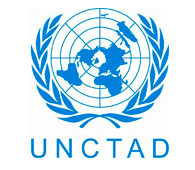Tempo de leitura: 5 minutos
Intesa Sanpaolo presented the new plan to develop the Special Economic Zones (SEZ) established in southern Italy and the Simplified Logistics Zones (SLZ) under construction in north-central Italy. The Bank announced €5 billion in credit facilities for the production sites and infrastructure upgrades,an international roadshow to attract capital from abroad and a reshoring plan. In addition, the bank has announced an ad hoc soft-rate credit line for companies that invest in SEZs and SLZs.
These zones are potentially strategic for the growth of the maritime economy and their purpose is to create a synergy between the port-logistics system and the manufacturing sector in order to drive new investments through fiscal and administrative incentives. The Group’s solutions were presented at the Gallerie d’Italia in Naples, during a conference attended by institutional representatives and global players in the maritime sector and at which Gian Maria Gros-Pietro, Chairman of Intesa Sanpaolo, also spoke.
After Giuseppe Nargi, Intesa Sanpaolo’s Regional Director for Campania, Calabria and Sicily, gave the opening remarks, Massimo Deandreis, General Manager of SRM, spoke, highlighting the crucial role that ports play in the production system.
The particularities of SEZs and SLZs were explored during the first round table, with speeches by Fulvio Lino Di Blasio, Chairman of the North Adriatic Sea Port Authority, ports of Venice and Chioggia, Angela Scianatico, Project Manager of the Ionian Interregional SEZ of Apulia-Basilicata, and Giuseppe Romano, Extraordinary Commissioner of the SEZ of Campania and Calabria. Anna Roscio, Head of Intesa Sanpaolo Corporate Sales & Marketing, explained the Bank’s initiatives for the development of free-trade zones in detail.
Another discussion between Riccardo Dutto, Head of Intesa Sanpaolo Infrastructure & Real Estate Partners, Vito Grassi, Deputy Chairman of Confindustria, Umberto Masucci, Chairman of International Propeller Clubs, and Mario Mattioli, Chairman of Confitarma, highlighted the need for dialogue between the worlds of business and finance to support the growth of the maritime economy.
The Bank has been actively involved in promoting SEZs in southern Italy since 2017: after allocating an initial €1.5 billion for credit facilities, it added another €5 billion and organised specific missions abroad, such as those to Beijing and Dubai, to engage international investors. A specialisedhelp desk for entrepreneurs to support them by optimising the business plans they submit has been also set up. In addition, Intesa Sanpaolo has signed cooperation agreements with the Port Authorities (Apulia, Trieste and Venice) and with the Extraordinary Commissioners of the SEZs (Campania, Sicily and Abruzzo).
Gian Maria Gros-Pietro, Chairman of Intesa Sanpaolo, said, “Intesa Sanpaolo has taken on the role of economic development driver of the Special Economic Zones and Simplified Logistics Zones, a role that we play in all the activities through which Italian companies express their distinctive know-how and ability to innovate. We are particularly proud to be the only banking group to have created a research centre specifically dedicated to the maritime economy, and specifically in southern Italy. SRM has become the benchmark for these analyses, which place Italy – and southern Italy in particular – at the centre of the international logistics reorganisation. While the Mediterranean accounts for only 1% of the earth’s seas, 20% of the world’s maritime traffic and 27% of container shipping lines pass through it. Its situation is evolving, in line with the changes in globalisation to mitigate the risks emphasised by the pandemic and supply chain disruptions due not only to the pandemic. Amidst an evolving, yet not declining, globalisation, large regional systems tend to consolidate, including the Mediterranean, which is already particularly well developed, with strong prospects for further growth. The technologically advanced and sophisticated economies on its northern coastline contrast with the countries along its southern coastline, which present strong demographic and economic growth. And below the Mediterranean coast there is all of Africa, whose current population is about 1.4 billion, showing the highest growth rate in the world, with estimates that it will be home to 2.5 billion people in 2050. Europe and Africa are complementary in many ways and share abilities to resolve each other’s problems. Maritime traffic will support their collaboration and Italian shipowners, which dominate not only short-sea shipping, are already playing a leading role. For this event in Naples, Intesa Sanpaolo is present in full force, with its most highly qualified people, to discuss horizons, projects and programmes.”
According to an analysis by SRM, the research centre associated with Intesa Sanpaolo, free-trade zones are seeing growth of up to 4% in exports and an increase in container traffic that could reach 8.4%. The National Recovery and Resilience Plan focuses on SEZs by allocating €630 million to port-logistics and rail link projects to consolidate connections between ports and production areas, with the aim of ensuring the adequate development of connections with the national transport network and, in particular, with the Trans-European Networks (TEN-T). The Campania SEZ is the area that received the most funds, with €136 million. In addition to these resources, the Plan includes another €3.4 billion for work on southern Italian ports. There are currently 8 SEZs in southern Italy and 7 SLZs in central-northern Italy under development.
The Mediterranean constitutes another strategic element, as it intercepts 20% of global maritime traffic and 27% of container trade routes. This area will continue to grow in 2021-2026, becoming the second largest in the world (after China) with the highest growth rates in port traffic: 3.7% in the eastern Mediterranean and 2.9% in the western Mediterranean.
The international scenario is also accelerating the regionalisation of globalisation process in the Mediterranean, driving an increase in maritime traffic within specific areas with short- to medium-haul routes. This dynamic is an important opportunity for Italy, which leads short-sea shipping in this area, handling 244 million tonnes and holding a market share of 38%. SEZs and SLZs can facilitate this transition and are an innovative tool for the creation of additional added value.





Os comentários foram encerrados, mas trackbacks e pingbacks estão abertos.